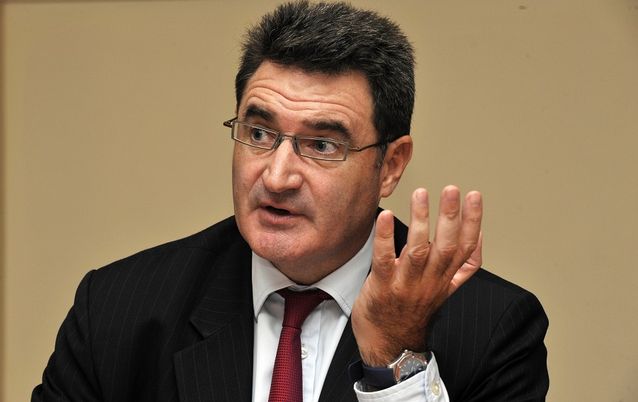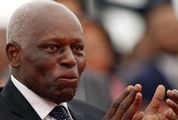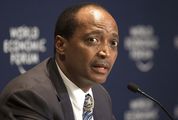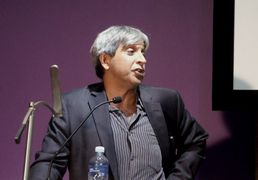Old Mutual’s decision to split because it is able to, makes sense
by George Hay,
2016-03-11 15:50:30.0
LONDON — Old Mutual is splitting for a decent reason: it can. The Anglo-South African group took the bracingly unusual step on March 11 of admitting its four main businesses have little reason to stay together. The same goes for other corporate entities, but the stars rarely align such that companies do anything about it.
First item on the sanity check: Old Mutual’s breakup makes sense. The company’s £9bn market value could theoretically rise by a fifth if its four businesses — an emerging markets financials arm, a UK wealth manager, a separately listed US asset manager and a stake in Nedbank — were split apart, according to Breakingviews calculations.
New Old Mutual CEO Bruce Hemphill didn’t bring any sacred cows with him when he joined in November. European capital regulations don’t give Old Mutual the credit its true solvency position implies. And SA’s currency, in which the majority of Old Mutual’s earnings are generated, fell 27% against sterling in 2015.
All this potentially applies to another Anglo-South African group: Barclays. The UK bank has a new CEO in Jes Staley. It also faces an irritating curveball in the shape of US and UK rules that force capital to be placed in separate geographical buckets, and a valuation of just 0.5 times its forecast book value, according to Eikon estimates.
Staley’s main eureka moment thus far is to get out of Africa. But the real problem is an investment bank that persistently fails to make its cost of equity. A really ballsy move would be to unwind the remnants of Lehman Brothers in the US via a New York listing. Doing so would, if the investment bank could be listed at 0.8 times tangible book value, imply a value for Barclays of 320 pence, according to Bernstein Research — almost double its current share price.
Why do these no-brainers fail to happen? Most CEOs have little interest in downsizing themselves.
Staley, an investment banker, may not want to exit investment banking. And the market doesn’t always react predictably — Old Mutual’s shares fell 5% in early trading on March 11, not helped by an implied cut to its dividend. Doing so when new equity issues are hard to pull off is even less likely. Old Mutual offers a template, but not one many will follow.
Old Mutual said on March 11 it would split up into its four main businesses — Old Mutual Emerging Markets, Old Mutual Wealth, Nedbank Group and Old Mutual Asset Management.
The breakup of the company, which is listed in London and Johannesburg, follows a strategic review announced in November when Hemphill took over as CEO.
Old Mutual’s capital ratio under new European Solvency II rules was 135%. The group said it had not yet decided how it would go about spinning off the units, but that it expected the separation to be largely complete by the end of 2018.
The group said its pre-tax adjusted operating profit for 2015 rose 4% in reported currency terms to £1.7bn.
Reuters

Bruce Hemphill. Picture: FINANCIAL MAIL
LONDON — Old Mutual is splitting for a decent reason: it can. The Anglo-South African group took the bracingly unusual step on March 11 of admitting its four main businesses have little reason to stay together. The same goes for other corporate entities, but the stars rarely align such that companies do anything about it.
First item on the sanity check: Old Mutual’s breakup makes sense. The company’s £9bn market value could theoretically rise by a fifth if its four businesses — an emerging markets financials arm, a UK wealth manager, a separately listed US asset manager and a stake in Nedbank — were split apart, according to Breakingviews calculations.
New Old Mutual CEO Bruce Hemphill didn’t bring any sacred cows with him when he joined in November. European capital regulations don’t give Old Mutual the credit its true solvency position implies. And SA’s currency, in which the majority of Old Mutual’s earnings are generated, fell 27% against sterling in 2015.
All this potentially applies to another Anglo-South African group: Barclays. The UK bank has a new CEO in Jes Staley. It also faces an irritating curveball in the shape of US and UK rules that force capital to be placed in separate geographical buckets, and a valuation of just 0.5 times its forecast book value, according to Eikon estimates.
Staley’s main eureka moment thus far is to get out of Africa. But the real problem is an investment bank that persistently fails to make its cost of equity. A really ballsy move would be to unwind the remnants of Lehman Brothers in the US via a New York listing. Doing so would, if the investment bank could be listed at 0.8 times tangible book value, imply a value for Barclays of 320 pence, according to Bernstein Research — almost double its current share price.
Why do these no-brainers fail to happen? Most CEOs have little interest in downsizing themselves.
Staley, an investment banker, may not want to exit investment banking. And the market doesn’t always react predictably — Old Mutual’s shares fell 5% in early trading on March 11, not helped by an implied cut to its dividend. Doing so when new equity issues are hard to pull off is even less likely. Old Mutual offers a template, but not one many will follow.
Old Mutual said on March 11 it would split up into its four main businesses — Old Mutual Emerging Markets, Old Mutual Wealth, Nedbank Group and Old Mutual Asset Management.
The breakup of the company, which is listed in London and Johannesburg, follows a strategic review announced in November when Hemphill took over as CEO.
Old Mutual’s capital ratio under new European Solvency II rules was 135%. The group said it had not yet decided how it would go about spinning off the units, but that it expected the separation to be largely complete by the end of 2018.
The group said its pre-tax adjusted operating profit for 2015 rose 4% in reported currency terms to £1.7bn.
Reuters
























Change: 0.40%
Change: 0.47%
Change: -0.49%
Change: 0.53%
Change: 1.03%
Data supplied by Profile Data
Change: 1.71%
Change: 1.28%
Change: 0.40%
Change: 0.00%
Change: 1.64%
Data supplied by Profile Data
Change: -1.27%
Change: 0.00%
Change: 0.05%
Change: -0.08%
Change: 0.35%
Data supplied by Profile Data
Change: -0.02%
Change: 0.21%
Change: -0.06%
Change: 0.53%
Change: 0.70%
Data supplied by Profile Data